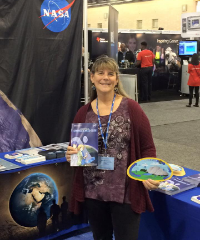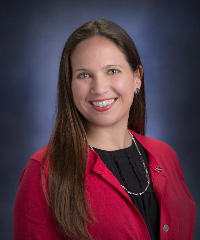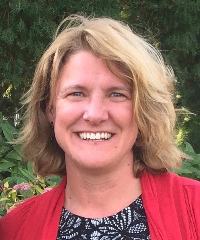Community Blogs
Community Blogs
Discover how the GLOBE community is engaging in all things GLOBE through the community blog posts below.
Learn how to create a GLOBE community blog post.
Filter By:
Blogs List
Have you ever wondered if you could compare the precipitation data you are collecting to NASA satellite data? The Global Precipitation Measurement (GPM) mission is celebrating the fact that we have just released the latest version of our IMERG data which includes nearly global precipitation estimates for the past two decades!
You can follow the directions here to find out how to compare and contrast your precipitation data with that of the GPM mission for your location. If you haven't been collecting precipitation data, you can do this alternative ...
Read More »
Posted in:
Curriculum:
STEM
SCIENCE AND MATH
TECHNOLOGY
Event Topics:
CAMPAIGNS AND PROJECTS (IOPS, ETC)
Field Campaigns:
WATERSHEDS
EL NIÑO
GPM
GLOBE Science Topics:
EARTH SYSTEM SCIENCE
CLIMATE CHANGE
DATA INCLUDED
BACKYARD SCIENCE
CLIMATE
EARTH AS A SYSTEM
SCIENTIST SKILLS
GLOBE PROTOCOLS
GLOBE Working Groups:
EDUCATION WORKING GROUP
Investigation Areas:
ATMOSPHERE
EARTH AS A SYSTEM
HYDROSPHERE
PEDOSPHERE (SOIL)
BIOSPHERE
Learning Activities:
EARTH AS A SYSTEM
ATMOSPHERE AND CLIMATE
LAND COVER/BIOLOGY
HYDROLOGY
SOIL
News Topics:
CALENDAR
COMPETITIONS
Primary Audience:
PARTNERS
SCIENTISTS
ALUMNI
COUNTRY COORDINATORS
TRAINERS
TEACHERS
STUDENTS
Teacher's Guide:
DOCUMENT TYPES
INVESTIGATION AREA DOCUMENTS
Tú puedes reportar el cielo como 100% cubierto u obscurecido usando el protocolo de nubes en GLOBE y en la aplicación GLOBE Observer. ¿Cuál es la diferencia? Este blog tiene consejos para ayudarte. Todas las fotografías en este blog fueron colectadas por observadores como tú. ¡Gracias!
Al principio encontré la diferencia entre cubierto y obscurecido algo confuso, pero cuando entendí el significado de ambas, pude mejorar mis observaciones. Empecemos con definir ambos términos:
Cubierto – Noventa por ciento o más del cielo está cubierto por nubes. En esta situación ...
Posted in:
Curriculum:
STEM
ASSESSMENT AND EVALUATION
EDUCATION RESEARCH
SCIENCE AND MATH
TECHNOLOGY
Event Topics:
CAMPAIGNS AND PROJECTS (IOPS, ETC)
OTHER
SCIENCE SYMPOSIA AND FAIRS
COMPETITIONS
GLOBE Science Topics:
EARTH SYSTEM SCIENCE
GENERAL SCIENCE
GENERAL SCIENCE @ES
CLIMATE CHANGE
DATA INCLUDED
BACKYARD SCIENCE
CLIMATE
EARTH AS A SYSTEM
SCIENTIST SKILLS
GLOBE PROTOCOLS
GLOBE Working Groups:
EDUCATION WORKING GROUP
TECHNOLOGY WORKING GROUP
SCIENCE WORKING GROUP
Investigation Areas:
ATMOSPHERE
EARTH AS A SYSTEM
Learning Activities:
EARTH AS A SYSTEM
ATMOSPHERE AND CLIMATE
News Topics:
VIRTUAL SCIENCE FAIR
REGIONS
TRAINING
COMPETITIONS
MEETINGS
Primary Audience:
PARTNERS
SCIENTISTS
ALUMNI
COUNTRY COORDINATORS
TRAINERS
TEACHERS
STUDENTS
Student Research Reports:
U.S. STUDENT RESEARCH SYMPOSIA (SRS)
INTERNATIONAL VIRTUAL SCIENCE SYMPOSIUM REPORT
Teacher's Guide:
STANDARDS REQUIREMENTS
GRADE LEVELS
DOCUMENT TYPES
LANGUAGES
INVESTIGATION AREA DOCUMENTS
Audience : Everyone! (Students and teachers all grade levels, informal educators, and the general public)
Dates : October 15, 2019 - November 15, 2019
Observations : Clouds and aerosols (dust storms, haze, smoke). Limit 10 per day.
NASA is requesting your help to determine “What’s up in your Sky”. The GLOBE Clouds team wants to study differences in clouds and aerosols. The data collected during this fall challenge will be compared to results from the 2018 Spring Clouds Challenge. Help by submitting clouds, dust, haze or smoke observations ( limit of 10 per day ) to ...
Posted in:
Curriculum:
STEM
EDUCATION RESEARCH
LANGUAGE CULTURE AND ARTS
SCIENCE AND MATH
TECHNOLOGY
Event Topics:
CAMPAIGNS AND PROJECTS (IOPS, ETC)
OTHER
COMPETITIONS
GLOBE Science Topics:
EARTH SYSTEM SCIENCE
GENERAL SCIENCE
GENERAL SCIENCE @ES
CLIMATE CHANGE
BACKYARD SCIENCE
CLIMATE
EARTH AS A SYSTEM
SCIENTIST SKILLS
GLOBE PROTOCOLS
GLOBE Working Groups:
EDUCATION WORKING GROUP
TECHNOLOGY WORKING GROUP
SCIENCE WORKING GROUP
Investigation Areas:
ATMOSPHERE
EARTH AS A SYSTEM
Learning Activities:
EARTH AS A SYSTEM
ATMOSPHERE AND CLIMATE
News Topics:
IOPS
REGIONS
CALENDAR
COMPETITIONS
Primary Audience:
PARTNERS
SCIENTISTS
ALUMNI
COUNTRY COORDINATORS
TRAINERS
TEACHERS
STUDENTS
Student Research Reports:
U.S. STUDENT RESEARCH SYMPOSIA (SRS)
INTERNATIONAL VIRTUAL SCIENCE SYMPOSIUM REPORT
STANDARD RESEARCH REPORT
Teacher's Guide:
GRADE LEVELS
INVESTIGATION AREA DOCUMENTS
Guest Scientist Blog by Kayla M. Thomas, McNair Scholar, Southern Nazarene University
Oklahoma has experienced three major outbreaks of West Nile Virus (WNV) since its local introduction in 2002. State and local health agencies provide surveillance of mosquito-borne diseases although reduced resources and personnel limits its scope. With the addition of citizen scientists from the greater Oklahoma City, I was able to analyze ongoing mosquito observations by using NASA’s GLOBE Observer mobile app during the 2019 mosquito season.
Citizen scientist participation studies have ...
Posted in:
Guest Scientist Blog by Kenan Arica, NASA JPL Summer Intern
Mosquitoes are vectors for diseases such as malaria, dengue, Zika, Rift Valley fever, West Nile virus, chikungunya and other diseases. Unfortunately, climate change is expected to make the spread of mosquito-borne diseases worse. This summer, I did some exploratory research to see if we could combine the power of GLOBE citizen science data and social media to learn about where mosquitoes are found.
This summer I worked with the GLOBE Observer Mosquito Habitat Mapper (MHM) data. To ensure we get the ...
Posted in:
Guest Scientist Blog by Jacqueline Castellanos, NASA JPL Summer Intern
My summer internship at NASA Jet Propulsion Laboratory exposed me to all parts of the scientific process. I went on a hike in search of mosquitoes, collected data, and I had the opportunity to teach teachers how to use the GLOBE Observer Mosquito Habitat Mapper. In my analysis, I learned how to work with data of varying quality and saw how environmental factors affect mosquito abundance. Most importantly, I learned that data given context and explored in meaningful ways can help us understand the problems we ...
Posted in:
In the GLOBE Clouds protocol and GLOBE Observer app, you can report if your sky is “overcast” or “obscured”. But what’s the difference? Below are some tips to help! All the photographs featured were collected by observers just like you - Thank you!
I found “obscured” and “overcast” very confusing at first, but when I understood what they meant, things made much more sense. Let’s start by defining them:
Overcast – The sky is completely covered by clouds (cloud cover greater than 90%). This means that you will see little or no blue sky. When it’s overcast, you are looking at ...
Posted in:
Curriculum:
EDUCATION RESEARCH
STEM
SCIENCE AND MATH
TECHNOLOGY
Event Topics:
CAMPAIGNS AND PROJECTS (IOPS, ETC)
GLOBE LEARNING EXPEDITIONS
OTHER
GLOBE Science Topics:
EARTH SYSTEM SCIENCE
GENERAL SCIENCE
GENERAL SCIENCE @ES
CLIMATE CHANGE
BACKYARD SCIENCE
CLIMATE
EARTH AS A SYSTEM
SCIENTIST SKILLS
GLOBE PROTOCOLS
GLOBE Working Groups:
EDUCATION WORKING GROUP
TECHNOLOGY WORKING GROUP
SCIENCE WORKING GROUP
Investigation Areas:
ATMOSPHERE
EARTH AS A SYSTEM
Learning Activities:
EARTH AS A SYSTEM
ATMOSPHERE AND CLIMATE
News Topics:
COMPETITIONS
Primary Audience:
PARTNERS
SCIENTISTS
ALUMNI
COUNTRY COORDINATORS
TRAINERS
STUDENTS
TEACHERS
Partner News
Teachers from NASA Langley summer internships reported (through a Zoom presentation) how they modified their curriculum using GLOBE and on projects they completed at Langley to create GLOBE classroom-friendly resources.
Elena Sparrow from University of Alaska Fairbanks shared this publication with the Partner Listserve: Spellman KV, Sparrow EB, Chase MJ, Larson A, Kealy K. 2018. Connected climate change learning through citizen science: an assessment of priorities and needs of formal and informal educators and community members in Alaska. Connected Science ...
Posted in:
NASA GLOBE Clouds team with summer intern (from left to right: Tina Rogerson, Kevin Ivey, Marilé Colón Robles.
The NASA GLOBE Clouds team has been delighted to have recent high school graduate Kevin Ivey this summer as our intern through NASA's Internships and Fellowships program [ link ]. Read about his experience this summer as he tackled big data!
I’m Kevin Ivey and I’ve been interning with NASA GLOBE Clouds at NASA Langley Research Center this summer. I graduated high school in June and I’ll be a first-year at the University of Virginia this ...
Posted in:
Curriculum:
STEM
ASSESSMENT AND EVALUATION
EDUCATION RESEARCH
LANGUAGE CULTURE AND ARTS
SCIENCE AND MATH
TECHNOLOGY
Event Topics:
CAMPAIGNS AND PROJECTS (IOPS, ETC)
GLOBE Science Topics:
SCIENTIST SKILLS
GENERAL SCIENCE
CLIMATE
GLOBE Working Groups:
SCIENCE WORKING GROUP
EDUCATION WORKING GROUP
Investigation Areas:
ATMOSPHERE
Learning Activities:
EARTH AS A SYSTEM
ATMOSPHERE AND CLIMATE
Primary Audience:
TRAINERS
TEACHERS
STUDENTS
PARTNERS
SCIENTISTS
ALUMNI
COUNTRY COORDINATORS
¿Vives en un área que tiene tormentas de polvo atmosférico? Nos gustaría que fotografíes el evento y envíes tus fotos usando el app GLOBE Observer. ¿Ya has estado enviando datos sobre tormentas de polvo atmosférico? ¡MUCHAS GRACIAS! Ahora queremos que todos sepan que pueden enviar datos sobre estas tormentas con GLOBE Observer usando los siguientes pasos.
Conoce a los científicos
Daniel Tong es un pronosticador de polvo atmosférico con el Programa Nacional de Capacidades de Pronóstico de Calidad del Aire de la NOAA y el Equipo de Ciencias ...
Posted in:
Curriculum:
STEM
EDUCATION RESEARCH
SCIENCE AND MATH
Event Topics:
CAMPAIGNS AND PROJECTS (IOPS, ETC)
GLOBE Science Topics:
EARTH SYSTEM SCIENCE
GENERAL SCIENCE
GENERAL SCIENCE @ES
DATA INCLUDED
CLIMATE
EARTH AS A SYSTEM
SCIENTIST SKILLS
GLOBE PROTOCOLS
GLOBE Working Groups:
EDUCATION WORKING GROUP
TECHNOLOGY WORKING GROUP
SCIENCE WORKING GROUP
Investigation Areas:
ATMOSPHERE
EARTH AS A SYSTEM
Learning Activities:
ATMOSPHERE AND CLIMATE
News Topics:
REGIONS
Primary Audience:
PARTNERS
SCIENTISTS
ALUMNI
COUNTRY COORDINATORS
TRAINERS
TEACHERS
STUDENTS
Teacher's Guide:
INVESTIGATION AREA DOCUMENTS
Left: SEES Mosquito Mapper intern Maia W. in the field, sampling a mosquito larvae habitat on a construction site in her hometown. Right: GLOBE Observer Land Cover observations collected alongside mosquito habitat identifications provide important data for analysis. Photo credit: Author.
As part of our field research, SEES interns identify local potential mosquito breeding habitats. As I live in an area that is cold and rainy most of the year, I did not anticipate finding any larvae, and when I did find some, it was not in the area I expected. ...
Posted in:
# 19 August 2019
Prepared by Helen Amos, helen.m.amos@nasa.gov
How to Download Dust Observations Reported through GLOBE
Dust event on 10 July 2019. Photo credit: GLOBE
Citizen scientists from around the world have been reporting dust events using the NASA GLOBE Observer app . You can learn about how to get involved here.
This blog offers step-by-step instructions on how to download GLOBE ...
Posted in:
Curriculum:
STEM
SCIENCE AND MATH
TECHNOLOGY
Event Topics:
CAMPAIGNS AND PROJECTS (IOPS, ETC)
GLOBE Science Topics:
EARTH SYSTEM SCIENCE
GENERAL SCIENCE
DATA INCLUDED
BACKYARD SCIENCE
CLIMATE
SCIENTIST SKILLS
GLOBE PROTOCOLS
GLOBE Working Groups:
EDUCATION WORKING GROUP
SCIENCE WORKING GROUP
Investigation Areas:
ATMOSPHERE
EARTH AS A SYSTEM
Learning Activities:
EARTH AS A SYSTEM
ATMOSPHERE AND CLIMATE
News Topics:
TRAINING
COMPETITIONS
Primary Audience:
PARTNERS
SCIENTISTS
ALUMNI
COUNTRY COORDINATORS
TRAINERS
TEACHERS
STUDENTS
Teacher's Guide:
INVESTIGATION AREA DOCUMENTS
SEES Mosquito Mapper intern Lindsay W. in the field, sampling a mosquito larvae habitat site in her study area. Photo credit: Author.
California has recently emerged from a multi-year drought, but I live at the edge of a town in the chaparral where water is typically scarce. I often travel miles by car to find potential mosquito habitats, only to find no larvae in those water sources.
I eventually contacted Vector Control in hopes that they could direct me to potential breeding sites, and they sent me a few locations. As of yet, most sites I’ve visited have had water and no ...
Posted in:
Left: example larva of the genus Toxorhynchites recovered from one of the author's research traps. Right: Larval specimen of prey, Culex quinquefasciatus, for comparison. Toxorhynchites are predator larvae and easily recognized by their unique morphology and larger size. Photo credit: Author.
Toxorhynchites is part of the mosquito family (Culicidae), also known as the “elephant mosquito” and “mosquito eater” and for good reason! These formidable larvae use their mandibles to prey on the larvae of other mosquitoes inhabiting the ...
Posted in:
SEES Mosquito Mapper intern Parker L. in his lab, identifying a specimen recovered from one of his mosquito research traps. Photo credit: Author.
I am fascinated at how effectively Aedes albopictus has expanded beyond its historical geographical origins in Asia, sticking its proboscis into Texas along with every continent across the globe except Antarctica. This invasive mosquito, which serves as a vector for dengue and chikungunya, has been enormously successful in utilizing alternative breeding containers to supplement its natural oviposition sites. In fact, it ...
Posted in:
SEES Mosquito Mapper intern Thien-Nha T. in the field, documenting potential larvae habitat sites. Photo credit: Author.
Before this project, I never ever imagined I would be interested in studying any type of bugs, much less mosquitoes -- my itch-causing nemesis. However, the more I realized how interconnected these bugs are with the rest of the world and even my own life, the more I saw their importance.
My field experiment was designed to figure out what vegetation and color surrounding would attract the most mosquitoes. The structure and goal of the experiment were ...
Posted in:
SEES Mosquito Mapper intern in the field, setting mosquito traps. Photo credit: Clara U.
Something that has fascinated me in the research I have done so far is the vast impact that human activity has on the distribution of mosquito communities. Globalization and human travel are thought to be responsible for introducing many mosquito-borne diseases to unlikely areas, for example, spreading the Culex tarsalis , a vector of western equine encephalitis, to Washington State. Artificial habitats that foster mosquito breeding can develop in abandoned tires, plastic containers, and ...
Posted in:
Do you live in an area that has dust storms? The Global Learning and Observations to Benefit the Environment Program (GLOBE) team would like you to photograph dust events in your area and submit your photos using the GLOBE Observer app .
Join NASA GLOBE Clouds Project Scientist, Marilé Colón Robles, to learn more about how to collect your observations and educational resources you can use with formal and informal audiences. Your observations will be used by scientists to verify satellite observations and see if their models have successfully predicted these ...
Posted in:
Curriculum:
EDUCATION RESEARCH
SCIENCE AND MATH
TECHNOLOGY
Event Topics:
CAMPAIGNS AND PROJECTS (IOPS, ETC)
GLOBE Science Topics:
GENERAL SCIENCE
CLIMATE CHANGE
DATA INCLUDED
BACKYARD SCIENCE
CLIMATE
EARTH AS A SYSTEM
SCIENTIST SKILLS
GLOBE PROTOCOLS
GLOBE Working Groups:
EDUCATION WORKING GROUP
SCIENCE WORKING GROUP
Investigation Areas:
ATMOSPHERE
PEDOSPHERE (SOIL)
Learning Activities:
ATMOSPHERE AND CLIMATE
SOIL
News Topics:
CALENDAR
TRAINING
Primary Audience:
PARTNERS
SCIENTISTS
ALUMNI
COUNTRY COORDINATORS
TRAINERS
TEACHERS
STUDENTS
Teacher's Guide:
GRADE LEVELS
INVESTIGATION AREA DOCUMENTS
What happened in July 2019? Most of the month seemed to be taken up by the Annual Meeting which took place in Detroit, MI...but there were alot of other things too.
Partner News
The WestEd/US Berkeley Partnership is challenging their schools in a fall data challenge.
Boston University is training teachers this summer in preparation for academic year data collection. Teachers collected data with an IR thermometer at home for practice.
The Institute for Global Environmental Strategies (IGES), collectively with other SciAct Partners, offered 10 workshops at the ...
Posted in:
JULY 2019
FOR THE MONTH OF JULY 2019, HERE ARE THE TOP MOST ACTIVE GLOBE TREES AROUND THE GLOBE TEACHER/STUDENT RESEARCH CAMPAIGN PARTICIPANTS (EXTERNAL TO THE NASA/GLOBE TEAM) TAKING AT LEAST 10 MEASUREMENTS FOR TREE HEIGHT, GREENINGS, AND LAND COVER MEASUREMENTS FOR THE TREES AROUND THE GLOBE STUDENT RESEARCH CAMPAIGN!
THE MAPS REPRESENT THE TOP STUDENT/CAMPAIGN-BASED MEASUREMENT COUNTRIES FOR EACH OF THE THREE MEASUREMENTS.
CONGRATULATIONS!
TREE HEIGHTS (710 Total Measurements/Observations)
Taiwan Partnership ...
Posted in:
—
20 Items per Page










